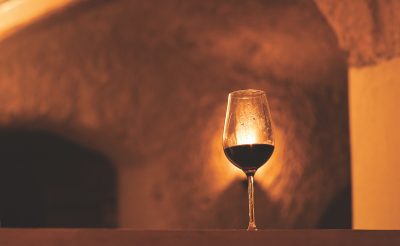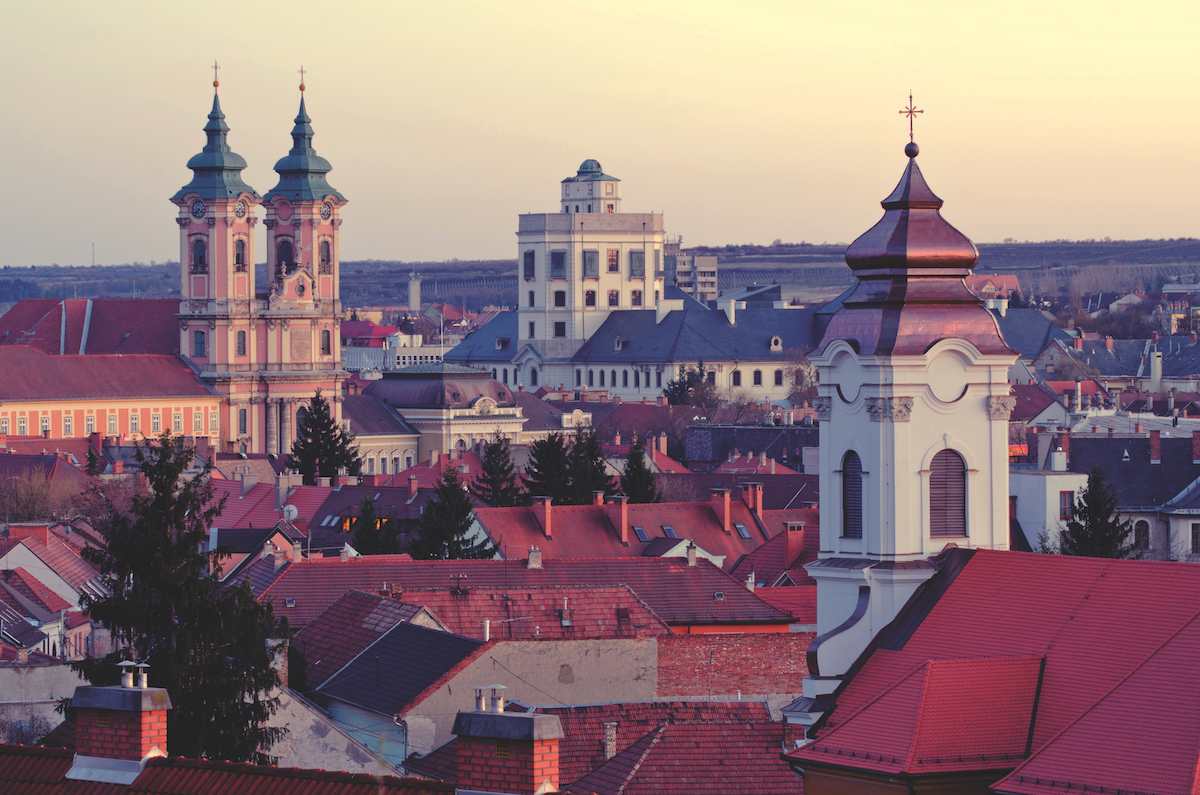The Valley of the Beautiful Woman

When visiting the charming Hungarian town of Eger in the baroque gallery of Central Europe, you can sample Bull’s Blood – egri bikaver – at 50-odd cellars with candle-lit vaults, all standing conveniently shoulder to shoulder around an oak-shaded square in the Valley of the Beautiful Woman.
Lifelong winemaker Tamás Sike, the producer of Sike Wines, is the man to talk to about the local red cuvée. Member of Egervin, the town’s communist-created co-op for 22 years, and a president for the past six, Tamás went his own way in 2004, before the syndicate eventually collapsed in 2008.
I have so many questions for Tamás, as I’m savouring the flavour of his own bikaver: ruby red, full-bodied, with a fruity and spicy interplay. Why ‘Bull’s Blood’ for a start? "Legend has it that during the siege of Eger castle by the Turks in 1552, a spy slipped in and witnessed the defenders drink from large leather flasks, a red liquid spilling down their throats," Tamás explains.

"He’d never seen wine before, so he reported to the Turkish pasha that the Hungarians fortified themselves with bull’s blood. Whatever they drank, it certainly worked, because they defeated the invaders and halted their progression into Europe – until 1596, that is, when the Turks returned and finally captured the castle." He smirks.
"Historians, on the other hand, point out that the nickname first appeared only 200 years ago and it conveys, rather accurately, the deep colour and thick texture of the wine." Siege or not, bikaver is ingrained into the consciousness of Eger.
In olden times, the various grape types grew and were harvested together in the vineyards, so every cuvée was different, depending on the individual patchwork of grapes. The phylloxera epidemic in the 1880s put an end to that, destroying every vine in the vicinity. When they were replanted, the grape types were separated and strict rules were introduced for the blend.
Tamás goes on to recount them. No single grape should dominate, with a maximum percentage of any type contributing no more than 50% to the mix. The cuvée should contain a minimum of four different reds. Kékfrankos (similar to cabernet franc) must be one of those with a minimum of five per cent. The wines must mature separately for one year and, after mixing, they must spend another six months together in oak barrels.
The rules were tightened in 1997 to regain the confidence of the consumer public. Marketed aggressively in the West during the Cold War, Bull’s Blood acquired a reputation for cheap plonk. The opprobrium was not without reason: Egervin cared only about production quotas, so quality went out of the window. After the fall of communism, members of the co-op went their own ways and in the past 10 or so years have obtained EU funding to upgrade their practices.
The increasing popularity of tastings in the Valley of the Beautiful Woman is ample proof that quality has improved. That’s unsurprising since Eger, with its volcanic soil and undulating south-facing hills, has been blessed with a microclimate that allows vines to flourish.
Built on soft tufa stone, every house in town has its own cellar and has made its own wine ever since Pauline monks settled here in the Middle Ages and introduced viniculture.
In the square, a party of locals have gathered around shade-flecked tables for a picnic that invariably involves cooking goulash. Most of us foreigners have the wrong idea about this traditional fare of Hungarian cowherds. Goulash is not beef stew – that’s perkölt. It’s a beef soup with potato, paprika, pork fat, onions, garlic and root vegetables.
Indeed, a bubbling cauldron is tended by a burly fellow with the same vigilance an Australian paterfamilias looks after his barbie. And what’s the best wine to drink with goulash? I give you only one guess.
A bubbling cauldron is tended by a burly fellow with the same vigilance an Australian paterfamilias looks after his barbie.
We move across the square to a winery called Wanda, named for the producer who founded it in 1991 cultivating pinot noir, syrah and kékfrankos. She serves her wines in expensive Riedel crystal goblets in the shape of cognac glasses. "It’s how you get the full aroma," she insists.
She may well be right, for I’m taken in by her bikaver that tastes like a spicy pinot noir, not unlike a good burgundy. She also offers me zengő, a great palate cleanser, served like a liqueur with traces of raspberry, cherry and blackcurrant. But like every other winery in the valley, she’s pushing a new local white blend, called egri csillag.
Strangely enough for a region famed for its reds, the climate of the Carpathian Basin is better suited to whites, and the Pauline monks cultivated mostly pinot gris here; the reds were brought later by Serbs fleeing the advancing Turks.
It’s early to tell, but the eminently quaffable csillag has had a tremendous reception so far. Following rules as strict as those of the bikaver, it may well prove the most agreeable surprise to hit the worldwide oenophile community in decades.
I have one last question for Tamás. Where is the Beautiful Woman? "After a few glasses of wine, every woman is beautiful," Tamás replies cheekily. "OK, seriously: some historians claim that in pagan times an ancient goddess, like Venus, was worshipped here, and that this valley was sacred.
"A more pedantic legend says that a beautiful woman lived here in the nineteenth century. Her husband was always away as a soldier and she sold wine from her cellar by herself. Her reputation was such that men came from all over the region to admire her beauty and buy her wine."
Will we ever know the truth? "Well, the name first crops up in 1843. Before that it was called the Koháry Valley, after a Hungarian general who liberated it from the Turks." So that means that a beautiful woman "could have lived here, yes," says Tamás and winks impishly.